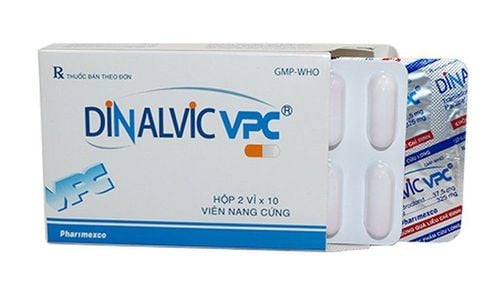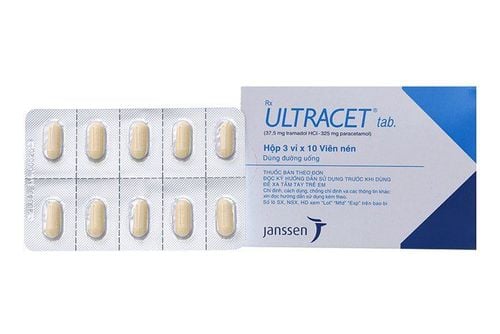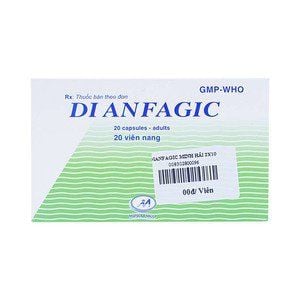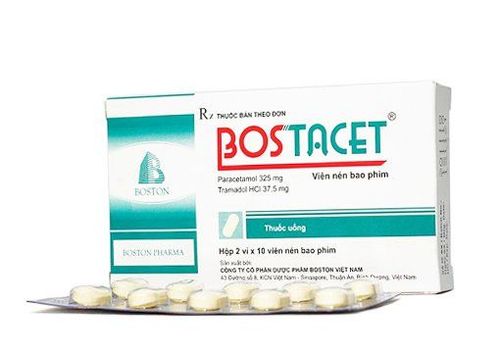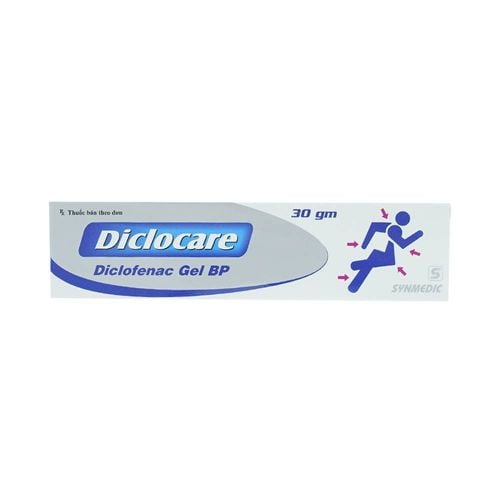This is an automatically translated article.
Yuraf is a combination pain reliever, used in cases of moderate to severe pain. To learn more about the drug Yuraf, please refer to the article below.
1. Uses of Yuraf
Yuraf medicine has the main active ingredients Tramadol 37.5mg and paracetamol 325mg. Tramadol is an analgesic that acts on the central nervous system. It acts through two mechanisms, binding of parent and active metabolite (M1) to the Mu-opioid receptor and mild inhibition of the reuptake of norepinephrine and serotonin. The effect of increasing pain threshold and prolonging analgesia when combined with other drugs. However, prolonged use can cause dependence.
Paracetamol is a central analgesic of the group of non-steroidal anti-inflammatory drugs, however, it has the main antipyretic and analgesic effects, does not affect platelet aggregation and inflammation.
When evaluated in animals, it was found that the combination of tramadol and paracetamol showed that they had a synergistic effect, thereby providing more effective and longer pain relief.
2. Indications and contraindications Yuraf
Indications for the treatment of Yuraf:
Yuraf is used to treat moderate to severe pain. Examples include muscle and joint pain, cancer pain, headaches or body aches that don't respond to regular paracetamol. Note that Yuraf should not be used in the following cases:
Subjects are hypersensitive to any ingredient of the drug. People are often anemic. Have severe liver disease. Not for use by pregnant and lactating women. Due to the inappropriate content, the drug should not be used in children under 12 years of age. Patients with glucose - 6 - phosphate dehydrogenase (G6PD) deficiency.
3. Dosage and how to take Yuraf
How to use: Yuraf is taken with water, can be taken with or without food. If the drug has side effects of stomach irritation, it should be taken after meals.
Dosage:
Adults and children over 12 years old: Dosage is from 1 to 2 tablets, spaced every 4 to 6 hours and not more than 8 tablets in 1 day. Children (under 12 years): Safety of Yural has not been established in this age group. Elderly (over 65 years old): There were no safety differences between users over 65 and younger users. Dosage should be similar to that of adults. Overdose: This condition can occur with clinical manifestations of drug overdose due to poisoning with tramadol, paracetamol or both active ingredients.
Tramadol: Serious consequences of tramadol overdose are possible respiratory failure, coma, convulsions, cardiac arrest and possibly rapid death. Paracetamol: Paracetamol is generally safe but in very high doses paracetamol can be toxic to the liver. Early symptoms that may occur after liver damage from paracetamol overdose include: gastrointestinal irritation, causing loss of appetite, nausea, vomiting, irritability, paleness, sweating. Symptoms of hepatotoxicity can usually appear 48 to 72 hours after taking the drug. If treated early, liver function can be restored, but after 48 hours, almost the liver has been damaged irreversibly.
4. Some possible side effects when taking Yural
Side effects frequently occur on the central nervous system and digestive system. The most common are nausea, dizziness, drowsiness.
Less common side effects:
Asthenia, fatigue, strong emotions. Headaches, shivers. Digestive system: abdominal pain, constipation, diarrhea, dyspepsia, flatulence, dry mouth, vomiting may occur. Psychiatric disorders: anxiety, confusion, agitation, insomnia, restlessness. Skin: May experience itching, rash, increased sweating. Rare side effects, including:
Chest pain, chills, fainting, withdrawal syndrome after taking the drug for a long time. Cardiovascular: Hypertension and possibly severe hypertension, hypotension. Central nervous system and peripheral nervous system: loss of balance, convulsions, muscle tension, migraine, involuntary muscle contractions, paresthesia, dizziness. Digestive system: difficulty swallowing, black stools due to gastrointestinal bleeding, edema in the tongue. Tinnitus. Cardiac arrhythmias: arrhythmia, tachycardia, palpitations. Liver enzymes increase, weight loss. Psychiatric disorders: forgetfulness, decreased consciousness, depression, mood swings causing substance abuse, hallucinations, impotence, nightmares, bizarre ideas. Anemia, decreased vision, albuminuria, urinary disturbances, little urine, urinary retention, respiratory failure. Serious anaphylactic and skin reactions may occur. It is necessary to inform the doctor about the abnormalities when you take the drug so that it can be corrected in time. In addition, there are some side effects that have not been fully listed, you also need to notify if you see other abnormalities.
5. Note when using the drug Yural
In the process of using Yural, it should be noted:
It should be avoided when there is a known history of allergy to any ingredient of the drug. This is a second-line painkiller, so you should not use it right away when you have mild or moderate pain, but need to use it alone first, if there is no response, use the combination form. It is important to use the recommended dosage, do not use too much because the risk of overdose is very dangerous. Avoid use in people with opiate addiction or withdrawal, because of the risk of relapse. Avoid concomitant use with alcohol because of the increased risk of hepatotoxicity. Caution should be exercised with the risk of respiratory depression due to tramadol's respiratory depression in people at high risk such as using local anesthetics, sedatives, and people with traumatic brain injury.
6. Yural . drug interactions
Drug interactions can occur with concomitant use of drugs..
Use with MAO inhibitors or serotonin reuptake inhibitors: May increase the risk of side effects, such as seizures seizures and serotonin syndrome. Concomitant use with carbamazepine: The analgesic effect of tramadol in the drug is reduced in patients taking carbamazepine due to increased metabolism of Tramadol. Use with quinidine: Taking quinidine with tramadol will increase the level of tramadol in the blood. Administration of Yural with CYP2D6 Inhibitors: In vitro drug interaction studies with CYP2D6 inhibitors such as fluoxetine, paroxetine, amitriptyline may limit the hepatic metabolism of tramadol. Thereby increasing the concentration of tramadol in the blood, there is a risk of poisoning if used a lot. To ensure the best quality of the medicine, you should store the medicine in a cool place, out of direct sunlight and out of the reach of children.
Hopefully, through the above article, it has helped you better understand the uses, dosage and usage of Yural. Due to its addictive content, this drug should only be used under the direction of a doctor.
Follow Vinmec International General Hospital website to get more health, nutrition and beauty information to protect the health of yourself and your loved ones in your family.
Please dial HOTLINE for more information or register for an appointment HERE. Download MyVinmec app to make appointments faster and to manage your bookings easily.




